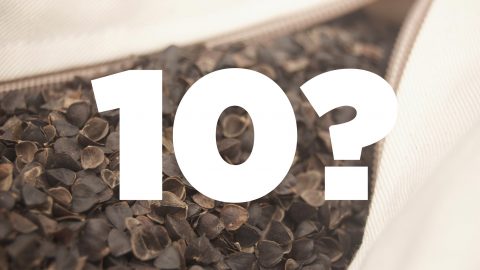
“I’m going to microwave these buckwheat hulls. Then I’ll roast some rocks and sand in my oven.”
We frequently get emails from customers wondering, “can you put buckwheat hulls in the microwave?” Yeah but…
Buckwheat hulls should not be heated in a microwave. They don’t effectively retain or conduct heat, so there’s really no reason to do it. Yes, they’ll warm up a bit, but buckwheat hulls are far from effective at storing heat energy. What little warmth is retained after being pulled out of your greasy microwave will quickly dissipate as cool air circulates between the hulls.
Microwaving buckwheat hulls will damage them.
Heating buckwheat hulls at high temperatures will result in a reduction of the moisture they contain. Dry hulls become brittle and as a result, they are easily crushed, which negates some of their benefits. Flattened or crushed buckwheat hulls can cause a couple (small) problems:
- The buckwheat hulls will lose some of their volume. Your pillow may feel flatter and not provide the support it once did.
- The crushed buckwheat hulls will not be as malleable as they once were. They will not grip one another like intact hulls do. As a result, your pillow won’t hold its shape as well as it could.
Also worth considering… Most quality buckwheat pillows have a metal zipper, so unless you enjoy fireworks, keep it out of your microwave oven!
Microwaved buckwheat hulls are simply not effective at retaining heat and thus make it a poor filling for heating pads. What’s more, it’ll degrade your magical buckwheat hulls. They’d be better off used in a bed pillow, so you really shouldn’t bother.
If you’re interested in heat therapy, rice is the way to go.
Rice won’t work well as pillow filling because it’s far too dense. It will not conform to the shape of your head without a lot of effort. It will, however, effectively store heat energy. Rice, inside a small fabric container, can be microwaved and used as a heating pad. I’ve never tried it myself, but it will apparently stay warm for almost an hour. Make your own reusable rice heating pad.



